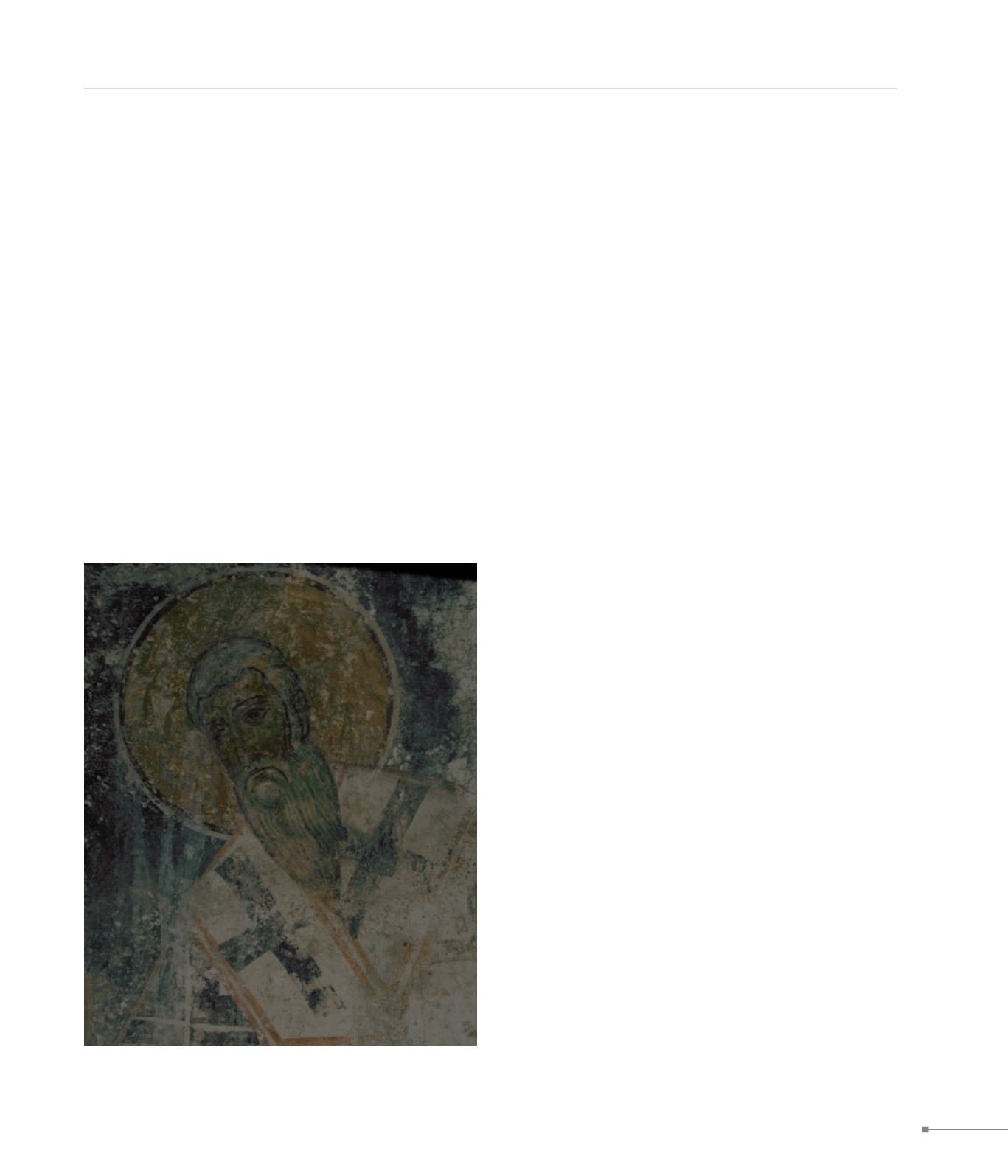
Gerakari.
Neus Amari.
CRETE
261
408. Neus Amari, Saint Anne, wall painting (Νεφς Αμάρι, Αγία Άννα,
τοιχογραφία)
403.
Gerakari.
At Photis, a rural location in Gerakari village, is the twin-naved
church of Saint John Theologos; part of its semicircular bar-
rel-vault collapsed recently. The E section of the N aisle was
constructed initially and then the church expanded to the W
with the addition of a narthex with a heavy dome. Finally, an
aisle was added in the S section of the church. The original E
section of the church features frescoes of the second half of
the 13th c., the narthex wall-paintings from the first half of the
14th c.
404.
Kaloeidena.
From the monastery of the Soter in Kaloeidena there survives
the catholicon, a barrel-vaulted, single-nave church (13th c.).
Part of its superstructure recently collapsed and has been re-
constructed. Beneath the apse the foundations of two earlier
churches are discernible. In the 14th c. the church expanded
to the W with the addition of a narthex with a heavy, cylindrical
dome. The original church features remnants of wall-paintings.
405.
Aghia Paraskevi.
In the centre of the village is the barrel-vaulted, single-nave
church of Aghia Paraskevi with wall-paintings of 1516. The
work of the unknown artist, ahead of its time, displays features
considered to be precursors of the Cretan School.
406.
Apodoulou.
In a rural situation stands the church of Saint George Xififoros.
It is a barrel-vaulted, single-nave church built in the 13th c.
and expanded and decorated in the first half of the 14th c.
Externally, an arcade has been added on the S wall in order
to provide support.
408.
Neus Amari.
Within the village is the single-nave church of Saint Nicholas,
with wall-paintings of the mid-14th c. Nearby, at the Rologi site,
is the ruined church of Saint John with two layers of frescoes
in the apse, the second dating from the first half of the 13th c.
At a short distance is found the single-nave church of Aghioi
Theodoroi, where fragments of frescoes from the mid-14th c.
are discernible. Close to the Asomatoi monastery is the single-
nave church of Saint Anne, with an added barrel-vaulted aisle
in the S section. The church was originally timber-roofed. In
the late 13th c. the N section collapsed and was reconstruct-
ed, incorporating decorative, pointed blind arcades of carved,
porous stone. The frescoes date to 1225.
407.
Vyzari.
In the vicinity of Vyzari a three-aisled basilica has been exca-
vated. Its sculpted decoration dates from the Early Christian
to the Mid-Byzantine periods. According to the excavator, the
basilica was constructed in the 7th c. and served as a cathe-
dral of the see of Sybritos when it was moved from its origi-
nal location (Thronos). In the cemetery of the village survives
the small, barrel-vaulted, single-nave church of Saint Nicholas
featuring decoration of the mid-15th c. In the church of Pana-
gia at Fourfouras wall-paintings of the first half of the 15th c.
have been revealed recently. At the Mourtza site is found the
church of Saint George, with wall-paintings dating to 1411.
The church of Panagia at Platania features high-quality deco-
ration, the work of two painters, dated to the first half of the
14th c.


